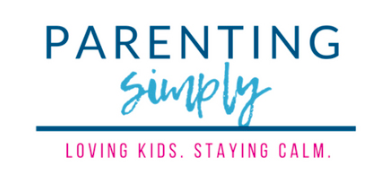Children use their senses to explore, learn and make sense of the world around them. They do this by touching, tasting, smelling, seeing, moving and hearing. Children (and adults) learn best and retain information when they engage all their senses.
Sensory play is any activity that stimulates your young child’s senses: touch, smell, taste, movement, balance, sight and hearing. It is important for brain development and is great for calming stressed and anxious children. Perhaps we can all use a little extra calm this summer.
Sensory bins can offer all of this and are super simple to put together.
What is a sensory bin?
If you have ever visited a pre-schoolor kindergarten class you have probably seen a variety of sensory bins. They are great for sensory play and can also be used to reinforce academic skills.
The purpose of sensory bins is for sensory exploration (hence the name!), fostering play that incorporates a variety of senses: touch, sight, sounds, taste, smell and movement.
What do I put in a sensory bin?
Sensory bins can be filled with almost anything. Clear storage containers work great. Size is optional. (If you do get a very deep bin, make sure you have enough materials to fill it to the top so your child doesn’t need to bend over too much!)
Materials can include:
Water
Rice
Waterbeads (These can be a choking hazard, please be careful around young children.) Kids love this!
Sand/Colored Sand
Beans
Flour
Marbles (again, can be a choking hazard)
Popcorn kernels
Pasta
Birdseed
Shredded paper
Leaves
Fabric scraps
Shaving cream or finger paint (I would recommend a shallow bin for this or a rimmed cookie sheet.)
Tools:
Shovels
Cookie cutters
Measuring cups
Spoons
Pails
Bowls
Objects:
Magnetic letters or numbers
Cars, trucks, bulldozers
Animal figures
Holiday items
Buttons
Laminated pictures of different items
Sponges (mostly for water play)
Benefits of Sensory Bins:
Sensory bins can help reinforce children’s cooperative play skills. They have to learn how to share and take turns, and communicate their wants and needs to their peers. All the scooping, shoveling, mixing and pushing all builds a child’s fine motor skills. Bins are a great opportunity to reinforce language and vocabulary skills. Many teachers will hide items in the bins. For example, if they are discussing transportation vehicles, they will put toy cars, trucks, and planes in the bin. Many speech therapists do that as well. For instance, if they are working on articulation /s/ sound they will put items in the bin that start with the letter /s/. The same could be done for reading skills. Parents can easily replicate this at home.
Need some more great parenting tips?

